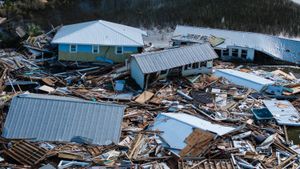The healthcare industry is sounding alarms over the alarming rise of violence against its workers, highlighting the dangers they face daily. According to the American Hospital Association (AHA), healthcare workers are now five times more likely than any other profession to experience physical attacks on the job. The pandemic has only exacerbated this troubling trend, leading to the launch of initiatives aimed at improving safety within healthcare environments.
Collaborative efforts have emerged between the AHA and the Federal Bureau of Investigation (FBI) to tackle this pressing issue. Together, they are rolling out new resources under the Hospitals Against Violence initiative. This program aims not just to protect healthcare professionals but also to address community violence within healthcare settings. Leaders from AHA have pointed to the dramatic increase of workplace violence incidents since the onset of COVID-19 as central to their concerns about both employee safety and patient care.
“Since the beginning of the COVID-19 pandemic, health care workers across the nation have experienced a sharp increase in incidences of workplace violence, with no sign this trend is receding,” the AHA stated. This sentiment has sparked urgent calls for action, especially considering the statistics presented by John Riggi, who oversees cybersecurity and safety for the AHA. He noted alarming figures: 13.2 physical assaults per every 100 nurses annually and 38.8 instances per 100 nurses of nonphysical violence, which encompasses issues like threats and harassment.
One important measure emphasized by officials includes proactive threat assessments. Karie Gibson, unit chief for the FBI’s Behavioral Analysis Unit-1, remarked, “When we're in this space, our main mission is to prevent those acts of terrorism and targeted violence.” She asserts the importance of assessing potential threats to mitigate the risk of violence before it occurs, highlighting the role of communities alongside healthcare institutions. Gibson’s viewpoints reveal the broader vulnerabilities of settings where many people gather, such as hospitals, adding, “If we go about thinking we’re immune from violence, then we’re just setting ourselves up to be even more vulnerable.”
The atmosphere of fear among healthcare workers is palpable. Staff at hospitals across the nation have expressed concerns about their safety, leading to emotional distress and potential staffing shortages as colleagues leave the profession due to safety worries. Facilities are now exploring various strategies to protect their staff, including enhanced training programs aimed at recognizing and de-escaloting potentially violent situations.
Healthcare professionals are often on the front lines, caring for individuals who are experiencing personal crises, which can sometimes lead to volatile interactions. Patients may be unwell, distressed, or under extreme pressure, and this environment can lead to unwanted confrontations. It’s reported by hospital officials and workers alike, this violence usually occurs unexpectedly and can escalate quickly, catching caregivers off guard.
The concern is not only about physical safety but also about how such attacks can impact morale and the overall quality of care provided to patients. Emotional wounds linger long after physical ones heal, affecting patient interactions and staff performance. Disagreement on treatment plans can prompt patients' families or friends to react aggressively, showing just how fragile the atmosphere can be within what should be healing spaces.
This growing crisis has led healthcare organizations to prioritize violence prevention strategies. Initiatives such as training staff on conflict resolution techniques and implementing more rigorous security measures are becoming commonplace. Some hospitals are even investing more significantly in surveillance technologies and employing additional staff to monitor and respond to incidents more effectively.
Healthcare leaders are increasingly advocating for stricter policies to address violence against employees and are lobbying for legislative measures to protect staff. Many voices are calling for comprehensive reforms on both the institutional and legislative levels. The idea is to create environments where healthcare workers can perform their duties without fear, which is integral not only for their well-being but for patient care.
Organizations are taking bold steps, introducing new protocols and greater awareness initiatives. There's hope among the staff, as communities band together to uplift and support those serving on the frontline. Educational workshops are being initiated to help individuals recognize early warning signs of potential violence and the tools needed to de-escalate tense situations.
Institutional leadership reflects on these developments, recognizing change is necessary. A more supportive environment, where healthcare providers feel both protected and valued, can only result from these systemic adjustments. The introduction of such measures is seen as not only beneficial but as necessary to retain skilled talent within the healthcare sector.
With many healthcare workers facing the reality of violence within their professional environments, it’s become more apparent now than ever: The healthcare system cannot endure this state of unrest. By taking necessary preventive actions to protect their staff, organizations can help improve outcomes for both care providers and patients alike, ensuring hospitals remain sanctuaries of healing rather than zones of conflict.
While the statistics paint a grim picture, the collaborative efforts from AHA and the FBI signal the beginning of much-needed change. By raising awareness, improving safety protocols, and fostering community engagement, there’s hope this conversation will lead to practical solutions to make the healthcare environment safer for everyone involved.



